France
Paris
Did you know that on average, a household throws away 25 single-use plastic bottles of hand soap a year, most of which are not recycled?
The beauty and cosmetics industry has been in the spotlight for the past decade; sustainability criteria and new generations of consumers demand a radical change in packaging policies. What if our favorite products disappeared after use… along with their packaging?
Water-soluble packaging, edible packaging… they all have the same purpose (and fate): enemies of single-use packaging, they’re meant to disappear! This innovative initiative, led by committed startups, offers an ecological solution to reduce plastic waste across all sectors. Designed to completely dissolve in water, soluble packaging eliminates the need to dispose of non-biodegradable materials, thus reducing the environmental footprint.
Soluble packaging is already a reality. According to Insight Ace Analytic, the global soluble packaging market was estimated at $3.39 billion in 2023 and is expected to reach $6.06 billion by 2031. This technology has already found its place in the food sector. How can we package water without leaving an impact on the planet?
NotPla, the startup behind algae and plant-based packaging, believes it has found a solution with its Ohoo range: water in the form of an edible blob. You basically eat your drink.
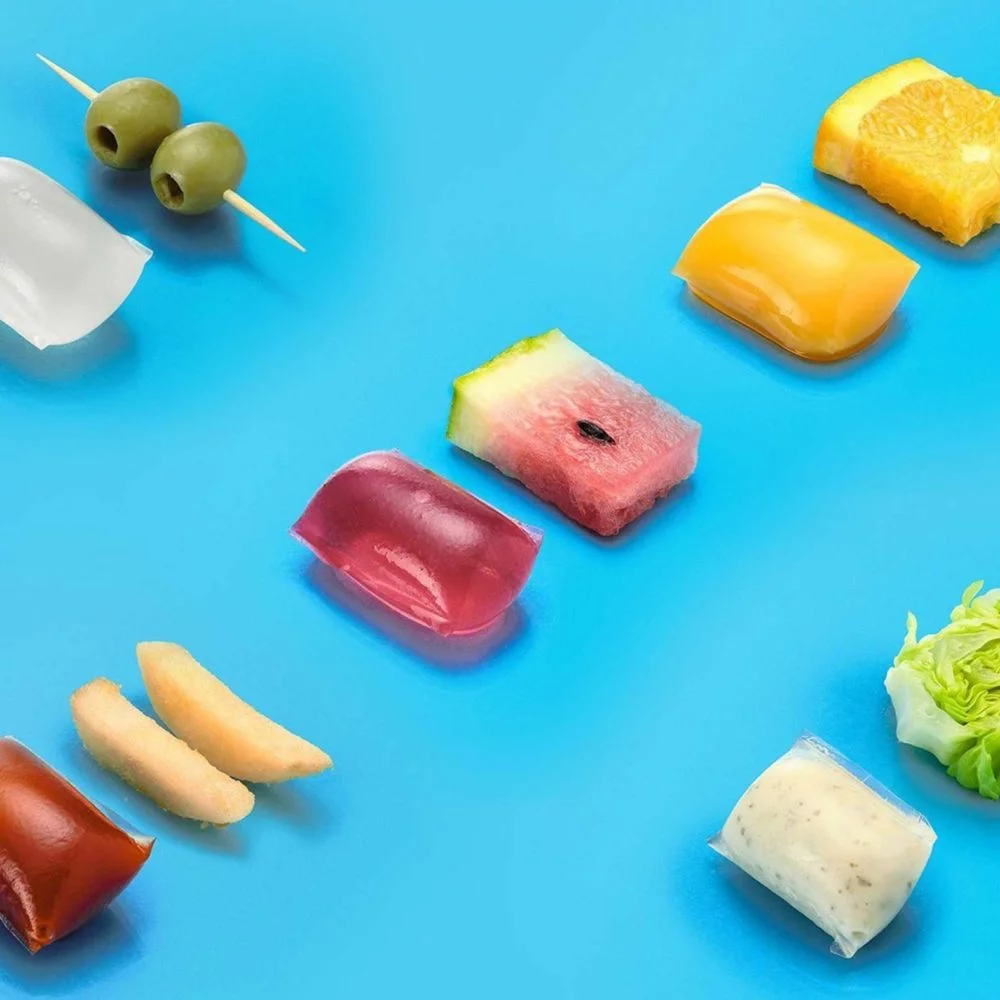
Credit : NotPla
And… what about beauty and cosmetics? Soluble packaging is gradually being integrated into all categories. From shower gels to hair care, makeup, body and hand soaps, cleansers, masks, creams… by expanding into consumer goods, all categories are affected. Several successful startups have already adopted soluble packaging as a competitive advantage. Let’s discover this trend together.
How to reconcile the desire to consume with the need for sustainability? Soluble packaging is an ideal solution for Generation Z. By offering products in single doses in packaging that dissolves in water, this innovation helps reduce waste. Gen Z, conscious consumer-actors, thus favor more sustainable options while maintaining their comfort, a smart compromise between consuming and preserving the environment.
INVISIBLEBAG, a soluble packaging provider, enables manufacturers and brands to replace conventional plastic packaging with compostable, biodegradable packaging without harmful residue on land.
How to reconcile the desire to consume with the need for sustainability? Soluble packaging is an ideal solution for Generation Z. By offering products in single doses in packaging that dissolves in water, this innovation helps reduce waste. Gen Z, conscious consumer-actors, thus favor more sustainable options while maintaining their comfort, a smart compromise between consuming and preserving the environment.
INVISIBLEBAG, a soluble packaging provider, enables manufacturers and brands to replace conventional plastic packaging with compostable, biodegradable packaging without harmful residue on land.
Reducing plastic waste is an unavoidable challenge for the beauty and cosmetics industry. From conception to disappearance, soluble packaging reduces the carbon footprint of our products, thus demonstrating our commitment to sustainability. We can FINALLY enjoy our well-being routine without feeling guilty.
Clean Circle, an engaged cosmetics brand, has created water-soluble eye patches after use. Deardot, on the other hand, has developed solid sheets that transform into cleansers after being moistened, all in a soluble bag that dissolves in the sink in… 5 seconds!
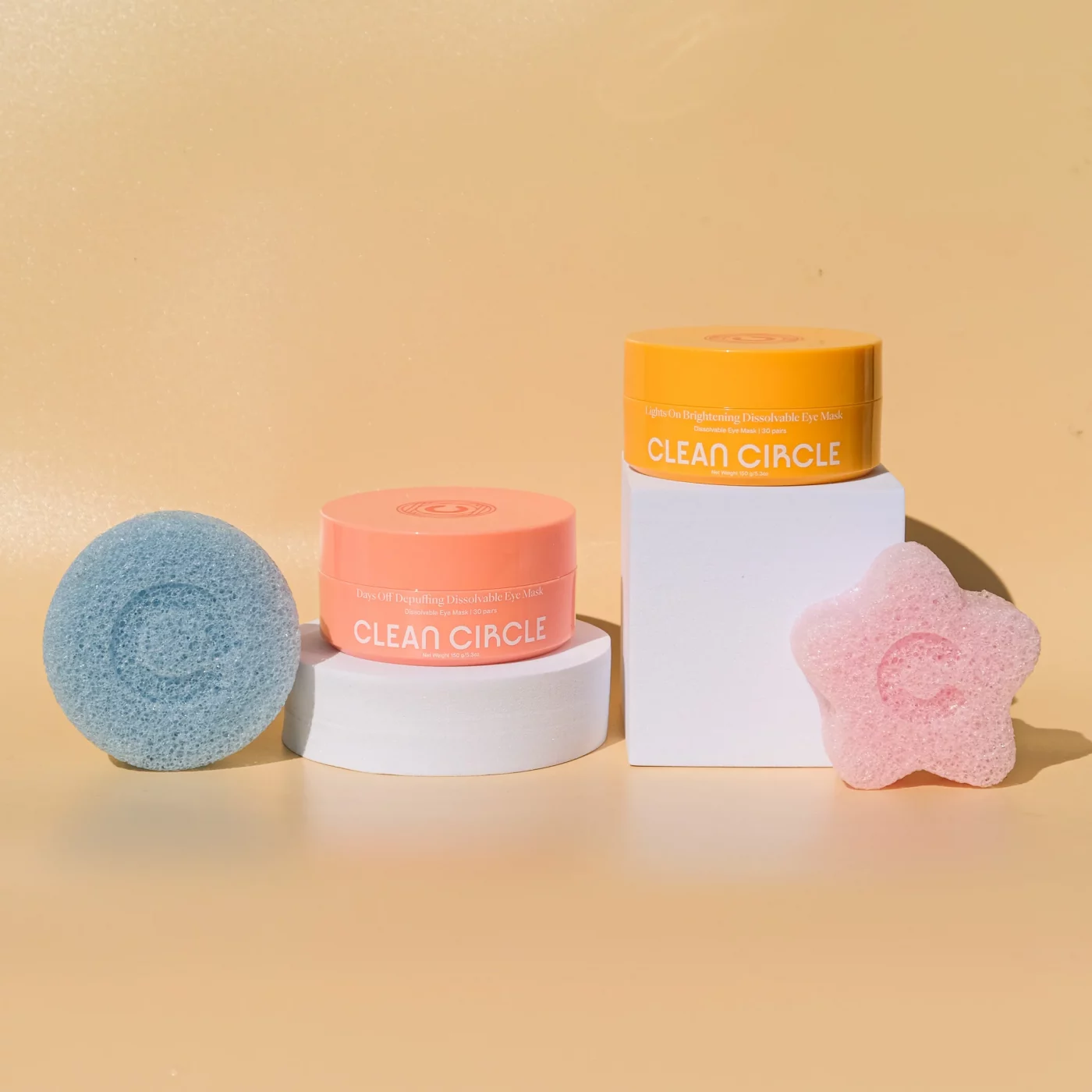
Credit : Clean Circle
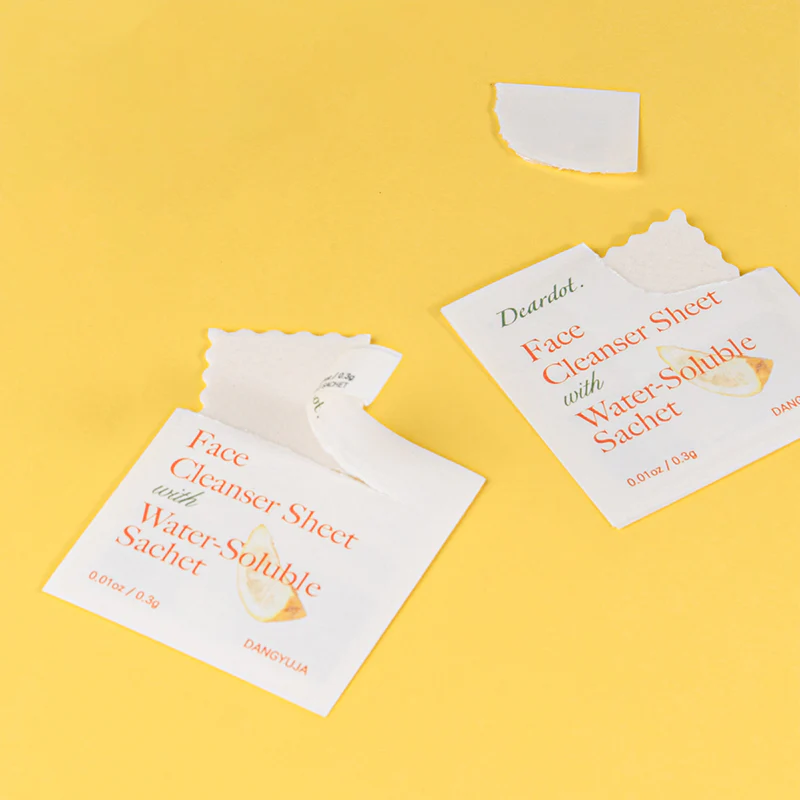
Credit : Deardot
One of the soluble packaging’s best friends is the soluble ingredient (bestie check!) The latter refers to solid formulations that, once moistened, take their final usable form. Solid formulations offer appreciable benefits in terms of stability, allowing high concentrations of active ingredients, resulting in a better user experience for customers.
Let’s focus on shower gels. The principle is both simple and ingenious: instead of regularly buying traditional bottles, which contain a large amount of water and are packaged in disposable plastic packaging, consumers can now opt for a format of shower gel in solid active ingredient. The latter comes in the form of bars that can be dissolved in water at home to reform the liquid shower gel. Refill, moisten and shake it off! It’s also a moment of entertainment and learning for children, Do It Yourself-wise. Your kids (and the planet) will thank you later.
Forgo, a Swedish cosmetics brand, has developed an effective solution to eliminate plastic: a refillable glass bottle and plastic-free paper refills to make hand soap. Just pour the refill powder into the bottle, add water, and shake (a Mojito, please)! Each refill means no plastic bottle and up to 85% fewer greenhouse gas emission.
From self-care to household products, 900.care has already conquered the French market for refillable products. Having raised 21 million euros in April 2024, the startup continues its revolution within households.
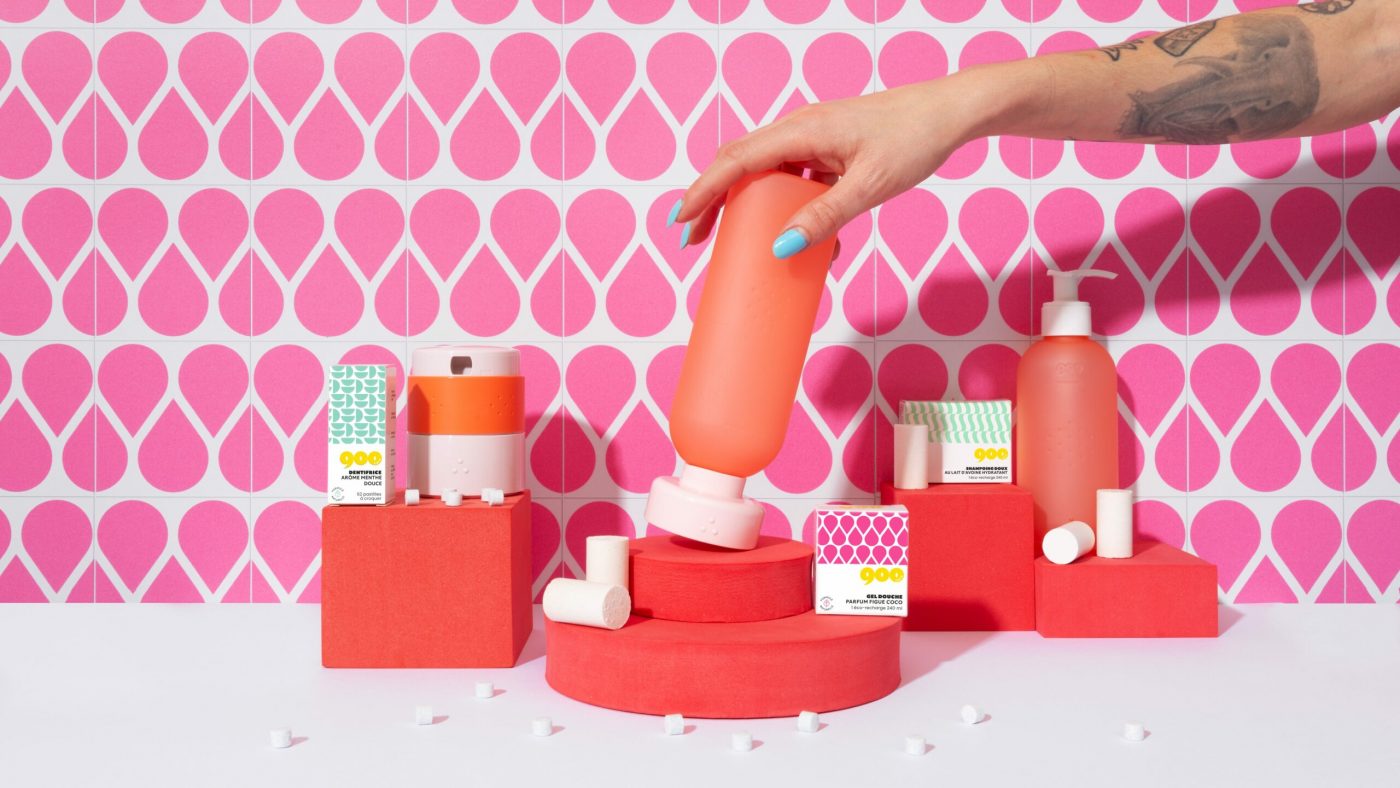
Credit : 900.care
In 2024, soluble packaging is no longer a miracle solution; it is now a reality that addresses many sustainability challenges in the industry. Between consumption needs and global concerns, it fully meets the expectations of a new generation of consumers. Perhaps it is the lever you need for your next launch? You too, take the step towards change.
Inclusive design… a broad topic for a diverse society. Is it still necessary to talk about it? Some will say that the issue is already resolved, but is it really the case? Have brands really taken the issue to heart? Don’t you think that we first need to admit that we are not inclusive to become so? Let’s explore this together.
Inclusive design… a broad topic for a diverse society. Is it still necessary to talk about it? Some will say that the issue is already resolved, but is it really the case? Have brands really taken the issue to heart? Don’t you think that we first need to admit that we are not inclusive to become so? Let’s explore this together.
Let’s start by reminding ourselves: what is inclusive design? It is an approach to design that aims to create products, environments, services, and technologies that are accessible and usable by a wide range of people, including those with specific needs or different abilities.
The main goal of inclusive design is to break down barriers and ensure that everyone, regardless of age, physical ability, gender, or ethnic origin, has the promise of being able to participate fully in society equally.
Let’s start by reminding ourselves: what is inclusive design? It is an approach to design that aims to create products, environments, services, and technologies that are accessible and usable by a wide range of people, including those with specific needs or different abilities.
The main goal of inclusive design is to break down barriers and ensure that everyone, regardless of age, physical ability, gender, or ethnic origin, has the promise of being able to participate fully in society equally.
In an increasingly diverse society, inclusive design has become a major issue; it is an ethical and responsible approach that helps to combat exclusion and promote inclusion. The statistics speak for themselves. According to a recent study by the World Health Organization (WHO), more than 1 billion people in the world live with some form of disability. This would represent a purchasing power exceeding 8 billion dollars according to the Global Economics of Disability report.
Brands that integrate inclusive design into their DNA will not only meet a growing demand but also an ethical necessity while expanding their consumer base but also contributing to creating a more equitable society.
A handful of brands have embraced this philosophy, transcending the limits of the conventional to create products and experiences that touch each of us. Take Apple, the famous technology company is recognized for its commitment to accessibility. Features like VoiceOver, which makes iOS devices usable by people who are blind, demonstrate how technology can be a force for inclusion.
There is also inclusive packaging, which are more than just packaging. They are a way to celebrate diversity and inclusion.
The famous Nestlé biscuit brand, present in Brazil for over 30 years, launches, in collaboration with CBA B+G, a limited edition with illustrations of the alphabet of the Brazilian sign language. This initiative aims to promote learning and inclusion, while bringing a little fun to children.
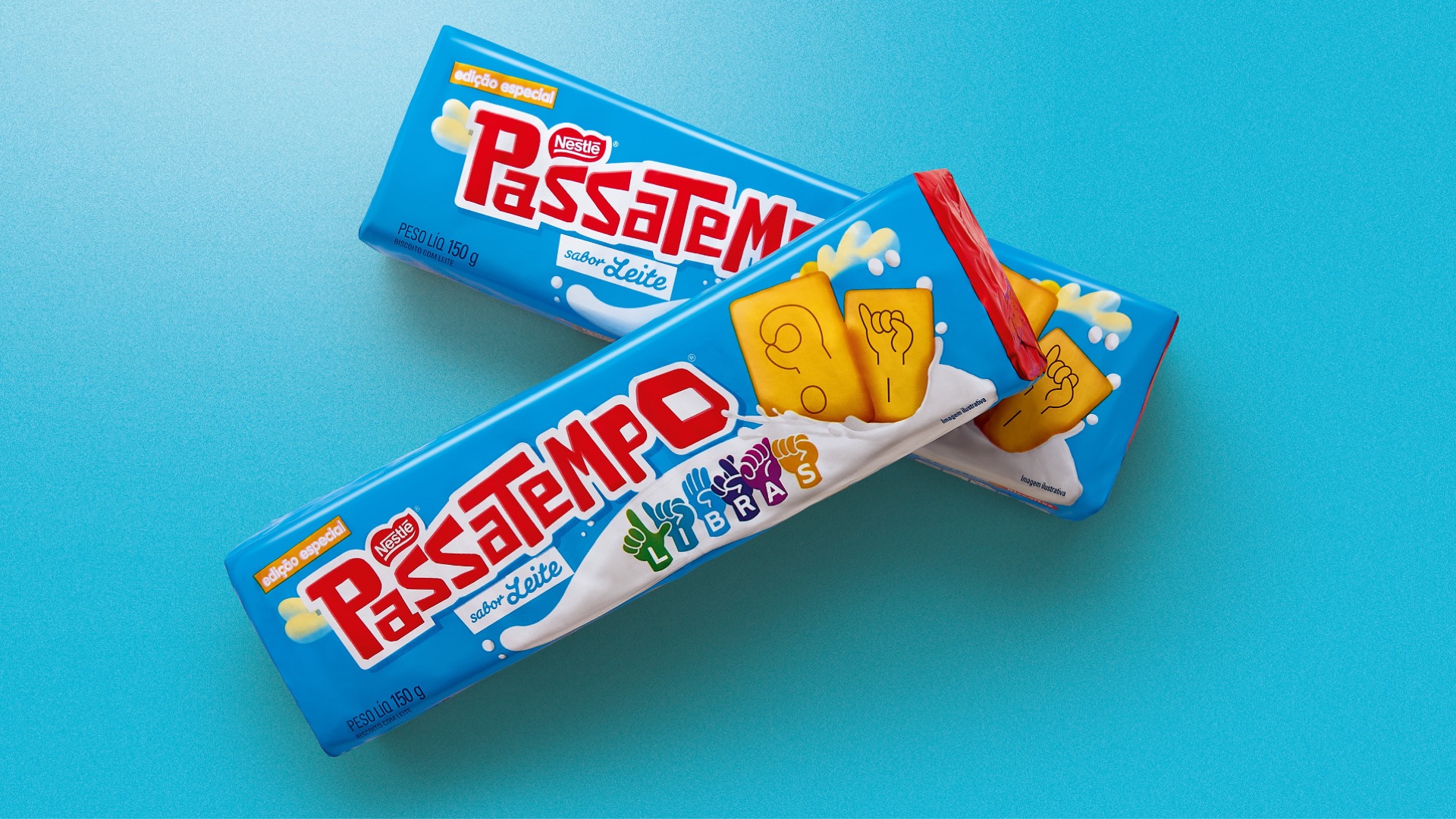
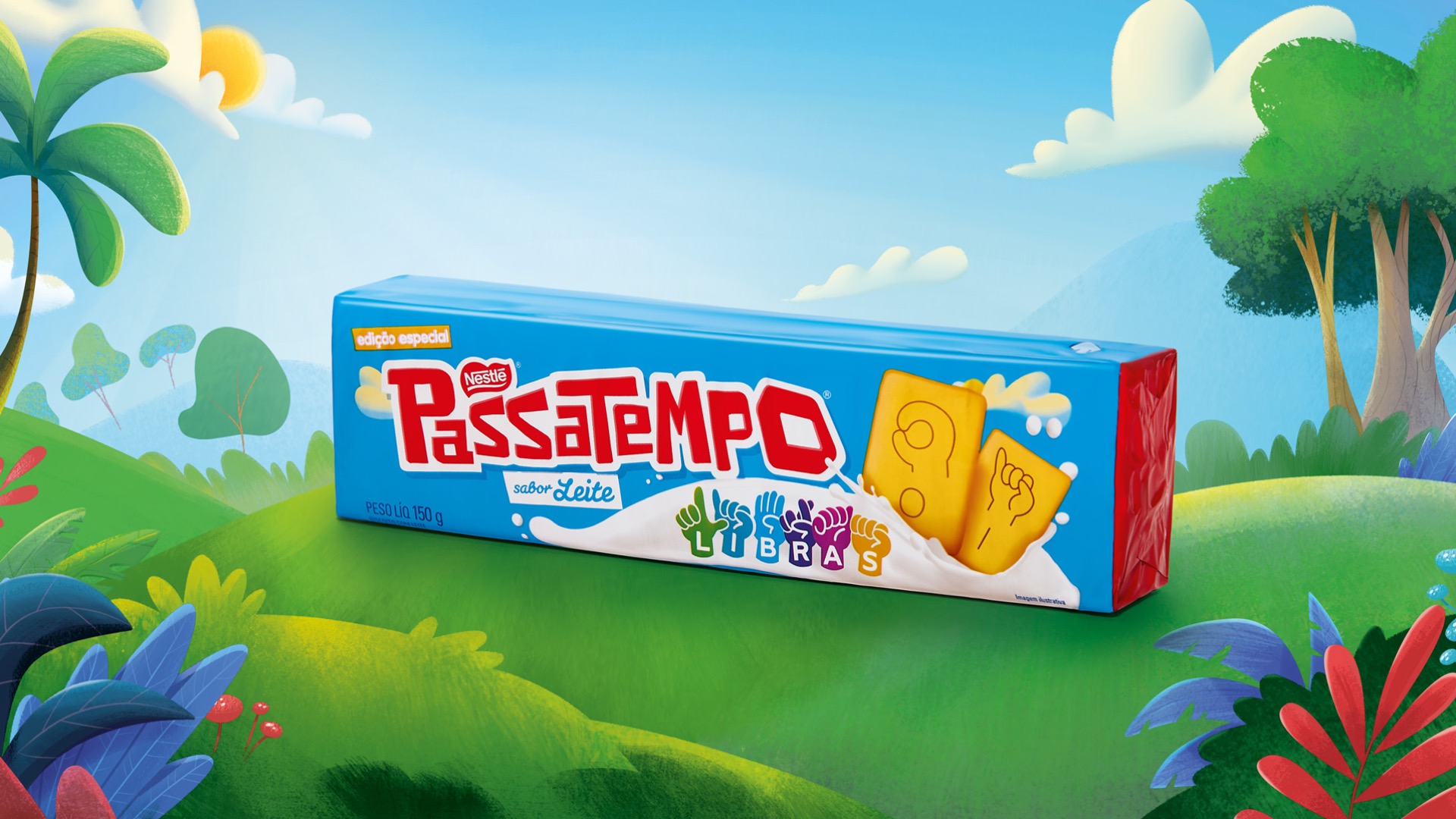
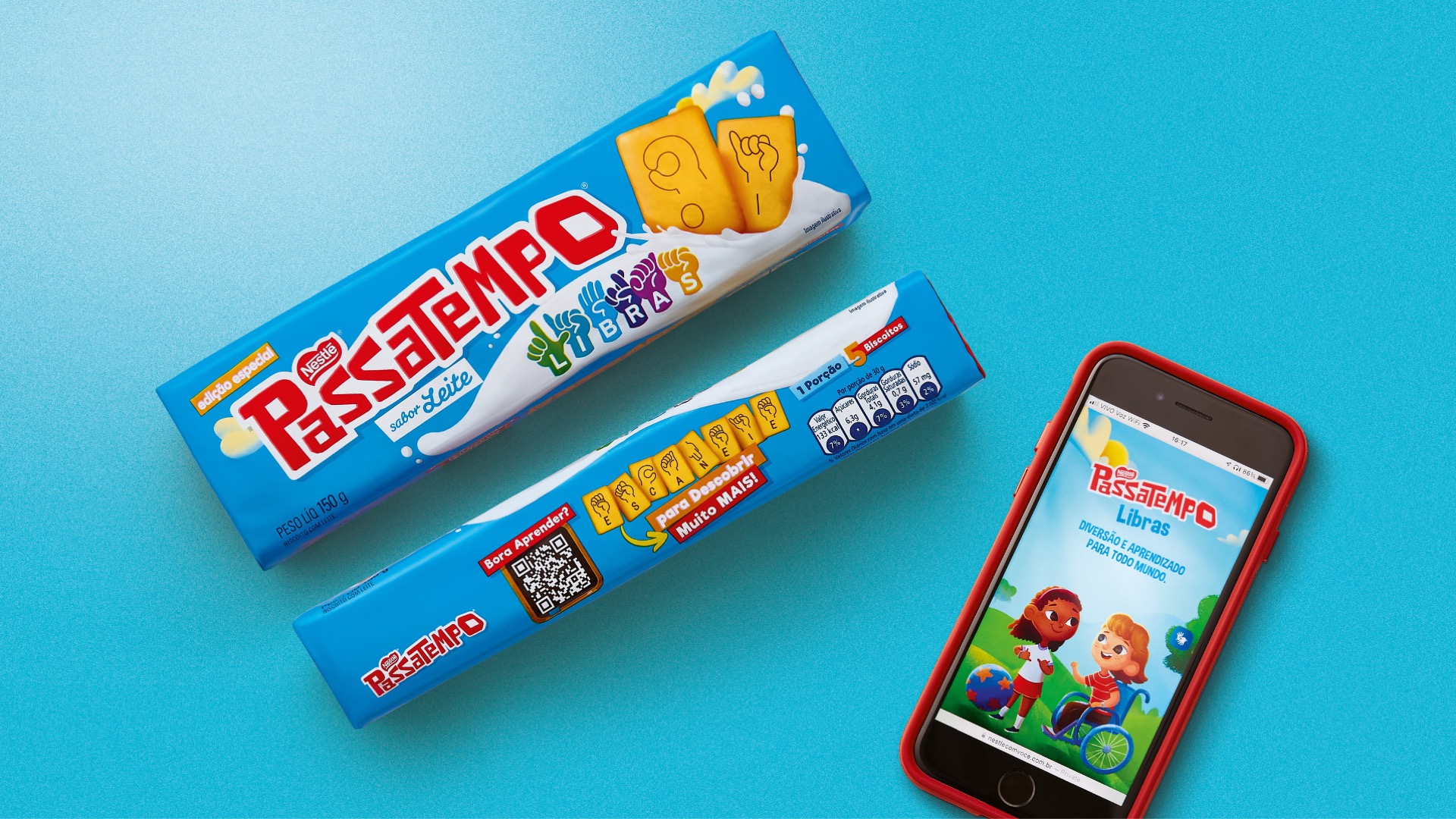
Having or embodied inclusive design is not so simple. Inclusive design is an approach that must be integrated from the beginning of the design process. It is not a feature that can be added or removed at will, but a philosophy that should guide the entire creative process. Indeed, it is not necessary to include this notion once the work is launched; it is recommended to integrate reflection on inclusion from the early stages of design.

One of the major points to start with will be to understand your targets: who are they? Their habits? Their needs? To consider perspectives and experiences other than our own, we can rely on studies or address people directly. The objective is to take advantage of human diversity, by integrating different points of view and learning from each other.
To do this, it is important to understand how people adapt to the world around them, taking the time to put themselves in their shoes. Empathy is an essential skill for designing inclusive products and services.

One of the major points to start with will be to understand your targets: who are they? Their habits? Their needs? To consider perspectives and experiences other than our own, we can rely on studies or address people directly. The objective is to take advantage of human diversity, by integrating different points of view and learning from each other.
To do this, it is important to understand how people adapt to the world around them, taking the time to put themselves in their shoes. Empathy is an essential skill for designing inclusive products and services.
This gives us the urge to jump on a project led by the LEGO brand. In the UK, the group collaborates with Diversity Roles Models, an organization that educates children about empathy and inclusion. The brand also works with Workplace Pride to measure and adjust LGBTGQ+ representation and inclusion within the group.
This commitment was naturally translated into June 2023, with the marketing of “everyone is awesome” which pays tribute to diversity. The pack consists of a rainbow background and 11 monochrome figurines. Each figurine has its own color and matching wig. The colors are not chosen at random: they take up those of the LGBTQ+ flag, those of the transgender community as well as the diversity of skin colors with black and brown. This set is a beautiful representation of love and open-mindedness. It encourages children to accept and celebrate differences. 🌈
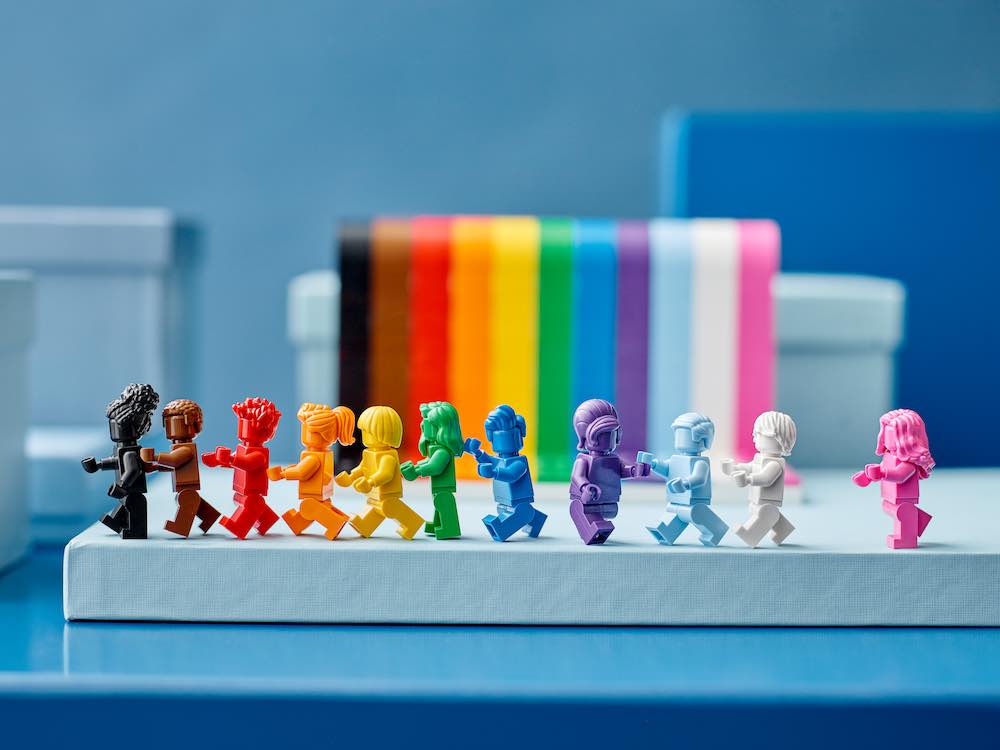
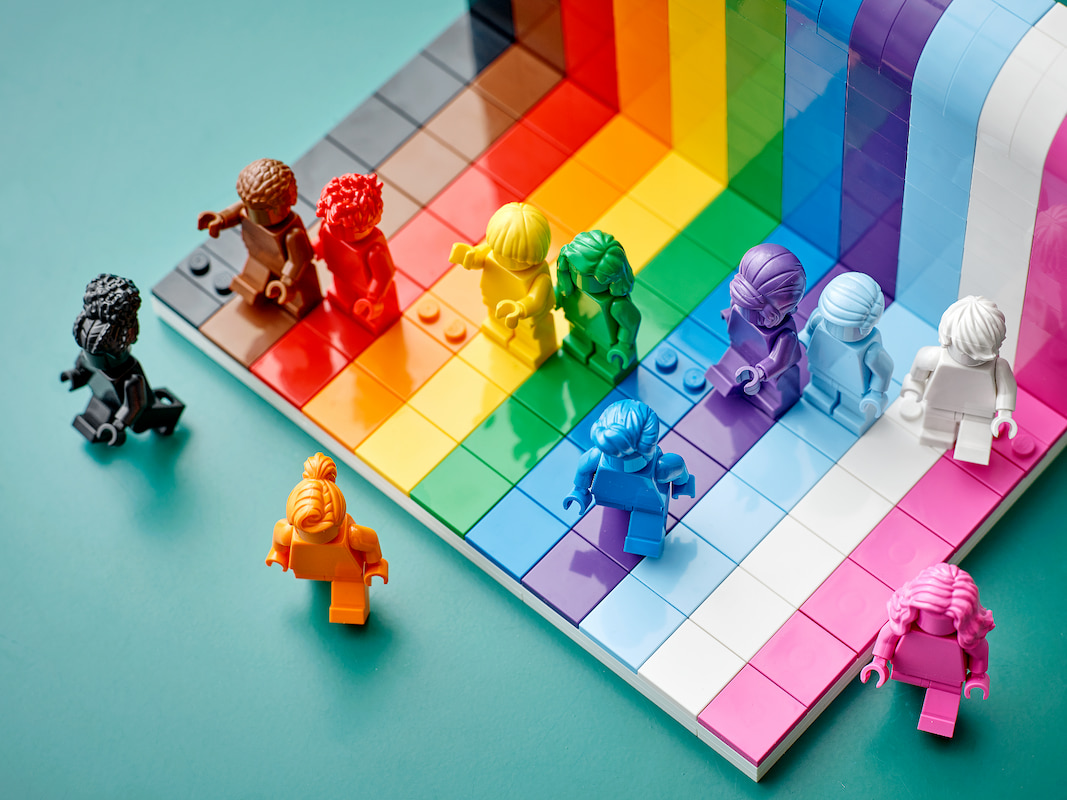
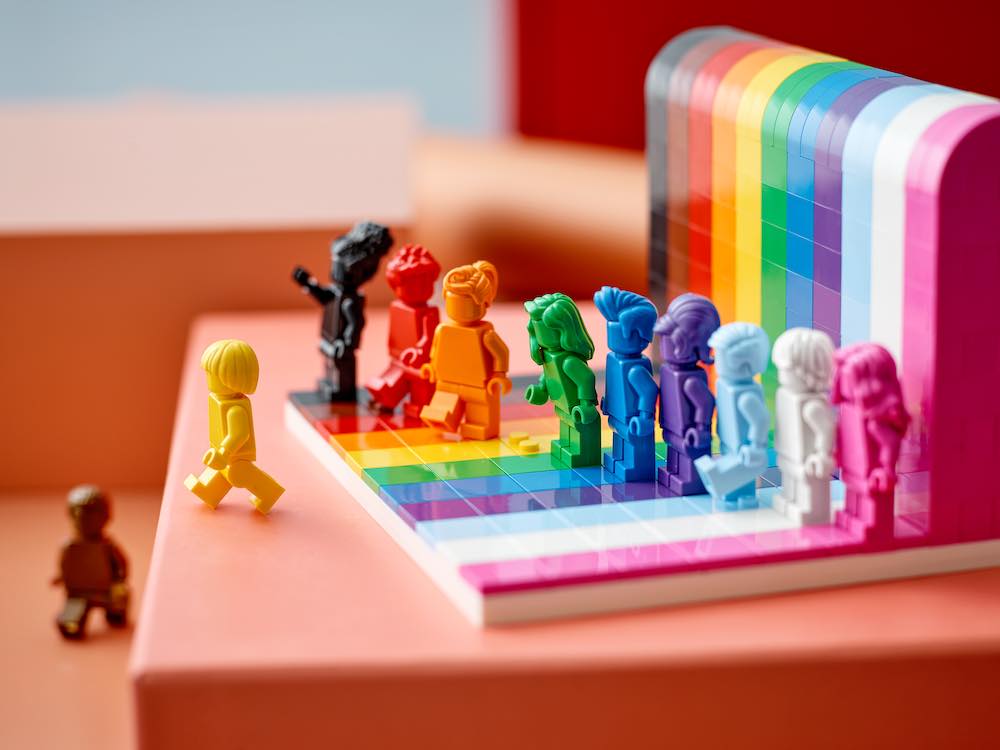
At CBA, we don’t see inclusive design as a trend, but as a responsibility. Each member of our team is trained to understand the diverse needs of our clients and to integrate them into our creations. Our creative process is based on inclusion, ensuring that our campaigns, websites, and communication materials are accessible to everyone.

Our latest project, the brand strategy for an innovative company driven by agro-ecology, Raízes do Campo is a concrete illustration of our commitment. We created the brand voice, with the tone of voice, manifesto, and storytelling of the brand. It was a real challenge to define the declaration of intent for the different links in the chain, with an inclusive message, to cover the diversity of stakeholders (producers, cooperatives, retailers, end consumers, as well as employees and investors).
Many brands aspire to create inclusive projects, communicate with a wide range of people and reach different audiences. However, this aspiration can sometimes prove to be a major challenge. As mentioned earlier, there are steps to follow before designing a truly inclusive project. It is important to note that simply stating “I want to be inclusive” is not enough.
Take the example of the oui.sncf app, which transformed into sncf-connect overnight! A brutal launch, accessibility was not thought out in the smallest corners, and the result? “Disappointing”, “Difficult to read”, “Not great”, “Frustrating”, “Not at all up to par”, “The least successful update of the century”, “A disaster”, … Dissatisfied users and add to that a lack of readability, you will get a flood on social networks and a failed launch. However, despite some setbacks, the brand has been able to question itself and improve its application over the months so that it can be accessible to the greatest number.
Nowadays, design has emerged as a pivotal force, shaping not only how we perceive brands but also how businesses operate and influence our behavior. We strongly believe in the transformative power of design.
It is more than just a pretty logo or a beautiful interface. It is a powerful tool that can help brands differentiate themselves, have a positive impact on the world, and create value. We are committed to this belief at CBA! Together, let’s explore how design, in all its facets, acts as a catalyst for change in brands and beyond. Eager to deep into it with us? Scroll down!
Nowadays, design has emerged as a pivotal force, shaping not only how we perceive brands but also how businesses operate and influence our behavior. We strongly believe in the transformative power of design.
It is more than just a pretty logo or a beautiful interface. It is a powerful tool that can help brands differentiate themselves, have a positive impact on the world, and create value. We are committed to this belief at CBA! Together, let’s explore how design, in all its facets, acts as a catalyst for change in brands and beyond. Eager to deep into it with us? Scroll down!
Design is more than just aesthetic appeal. It is about creating an identity, an ecosystem, and an experience that resonates with audiences. Designers, by using their talent strategically, can give brands extra value. How? By defining and creating unique expressions and experiences, positioning brands to become changemakers.
Design is a powerful business tool that can increase a company’s performance and values. The numbers speak for themselves: design can generate a 87% increase in sales. And that’s not all: 94% of a brand’s first impressions are related to its design.
Elements such as logos, typography, and color schemes play a vital role in defining a brand’s image. For instance, Apple Inc.’s sleek, bitten apple instantly evokes innovation and sophistication, showcasing the transformative power of design in brand identity.
Design is a powerful business tool that can increase a company’s performance and values. The numbers speak for themselves: design can generate a 87% increase in sales. And that’s not all: 94% of a brand’s first impressions are related to its design.
Elements such as logos, typography, and color schemes play a vital role in defining a brand’s image. For instance, Apple Inc.’s sleek, bitten apple instantly evokes innovation and sophistication, showcasing the transformative power of design in brand identity.
User experience (UX) is a field in which design directly influences the way we interact with brands. It encompasses a wide range of factors, such as product and service design, space planning, and content creation.
UX can have a significant impact on brands and consumers. Let’s take a closer look: the experiences that consumers have with a brand have a significant impact on their perception of that brand. A positive experience can create a sense of trust, loyalty, and attachment. A negative experience can lead to feelings of frustration, dissatisfaction, and loss of trust.
A positive experience can make a brand more desirable and more likely to be chosen by consumers. Consider the transformation brought about by ride-hailing apps, which have made transportation more convenient, efficient, and enjoyable for millions of people by taking a holistic approach that considers the needs and expectations of all users.
By creating experiences that are both useful and inclusive, brands can gain a competitive advantage, improve customer satisfaction, and create a more inclusive world.
Design can be a force for good. Sustainable design is an embodiment of this principle, ensuring that the creation process does not harm our planet. Brands embracing sustainability not only attract environmentally conscious consumers, but also contribute to a greener and more sustainable future.
For instance, Patagonia, a renowned outdoor clothing company, has made sustainability a core element of its design ethos. This is evident in its eco-friendly website, which is hosted on servers powered by renewable energy and uses sustainable design techniques.
In addition, design can play an important educational role in changing behaviors and moving towards greater virtue. Indeed, design can be used to inform and raise awareness, to encourage people to become better in their daily lives through awareness campaigns. Whether it’s through the layout of a store, the packaging of a product, or the design of an advertisement, all of these aspects influence our choices. For example, Apple packaging not only protects the product, but also creates an unboxing experience that elevates the perceived value of the device. We can also mention the “unboxing” experience of the Make My Lemonade brand: once the package is unpacked, the packaging transforms into a stylish home storage box.
Beyond products and services, design extends its influence to lift communities. Social design is about creating solutions to solve social problems, promote inclusion, and positive change. Design can change mindsets by awakening consciences with strong visuals and messages that can appeal to citizens and encourage them to act.
Design is inextricably linked to creating meaning for brands. The story a brand tells through its design elements resonates in the minds of consumers. When design is aligned with a brand’s core values and purpose, it improves its performance.
Nike is a perfect example of what we want to achieve; a brand that has mastered the synergy between design and meaning. The brand is known for its iconic logo, its use of bright colors, and its message of empowerment. These design elements are aligned with Nike’s core values of athleticism, performance, and inspiration. Nike’s use of design to communicate its values and mission has contributed to its success. The brand is one of the most recognizable and profitable in the world.
Nike is a perfect example of what we want to achieve; a brand that has mastered the synergy between design and meaning. The brand is known for its iconic logo, its use of bright colors, and its message of empowerment. These design elements are aligned with Nike’s core values of athleticism, performance, and inspiration. Nike’s use of design to communicate its values and mission has contributed to its success. The brand is one of the most recognizable and profitable in the world.
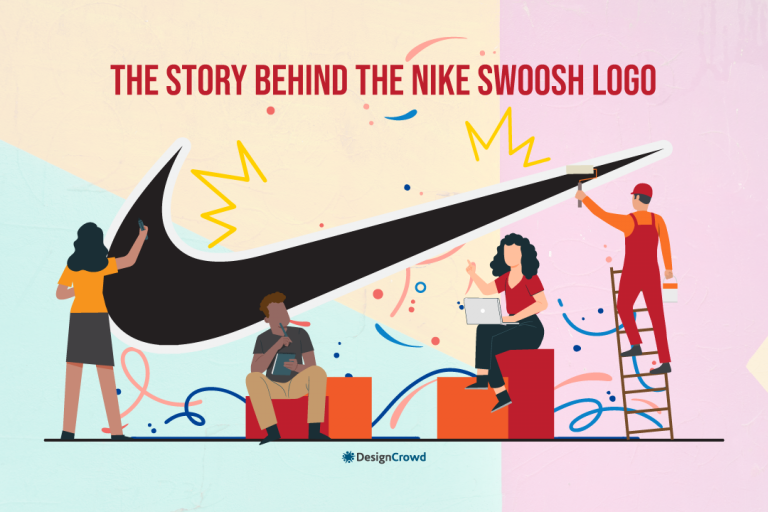
Design is a powerful force that has the potential to transform brands, business models, and consumer behavior. At CBA, we believe that design is not limited to the visual; it is about creating experiences that resonate with the public, align with values, and drive positive change. Design is a powerful tool that can be used to make a difference in the world. By using design thoughtfully, we can contribute to creating a more just, sustainable, and inclusive world.
Foodtech has revolutionized the culinary industry, transforming not only our eating, cooking habits but also our mindset. The constantly evolving sector offers numerous opportunities for brands looking to stand out in the market. According to Emergen Research, it is estimated that the global Foodtech market could climb up to $342 billion by 2027. However, it’s important to understand that Foodtech is not just about food, but also about the overall consumer experience. And this is where design comes into play.

Credit : Rebellyous Foods
This topic is gaining importance, now touching a wide range of players including schools, thanks to the expansion of foodtech. Rebellyous Foods, a company specializing in plant-based nuggets, is expanding its influence, with more and more educational establishments opting for its products. According to this Seattle-based company, this trend reflects a growing movement within US schools, aiming to offer a greater variety of plant-based options.
Design plays a crucial role in this evolution. By integrating a design approach into the development of new food products and services, Foodtech companies can create solutions that are not only functional but also aesthetically pleasing. For instance, the packaging design can make or break a product’s success in the market. By using environmentally friendly materials and attractive designs, brands can attract environmentally conscious consumers while standing out on the shelves.
Take the example of La Vie, which aims to change mindsets about plant-based meat. To do this, the brand chose colorful, positive, and accessible packaging; a true celebration of life, as no animal was slaughtered to make this meal! Illustrated by artist Egle Zvirblyte, these packages appeal to both vegans and meat lovers alike!
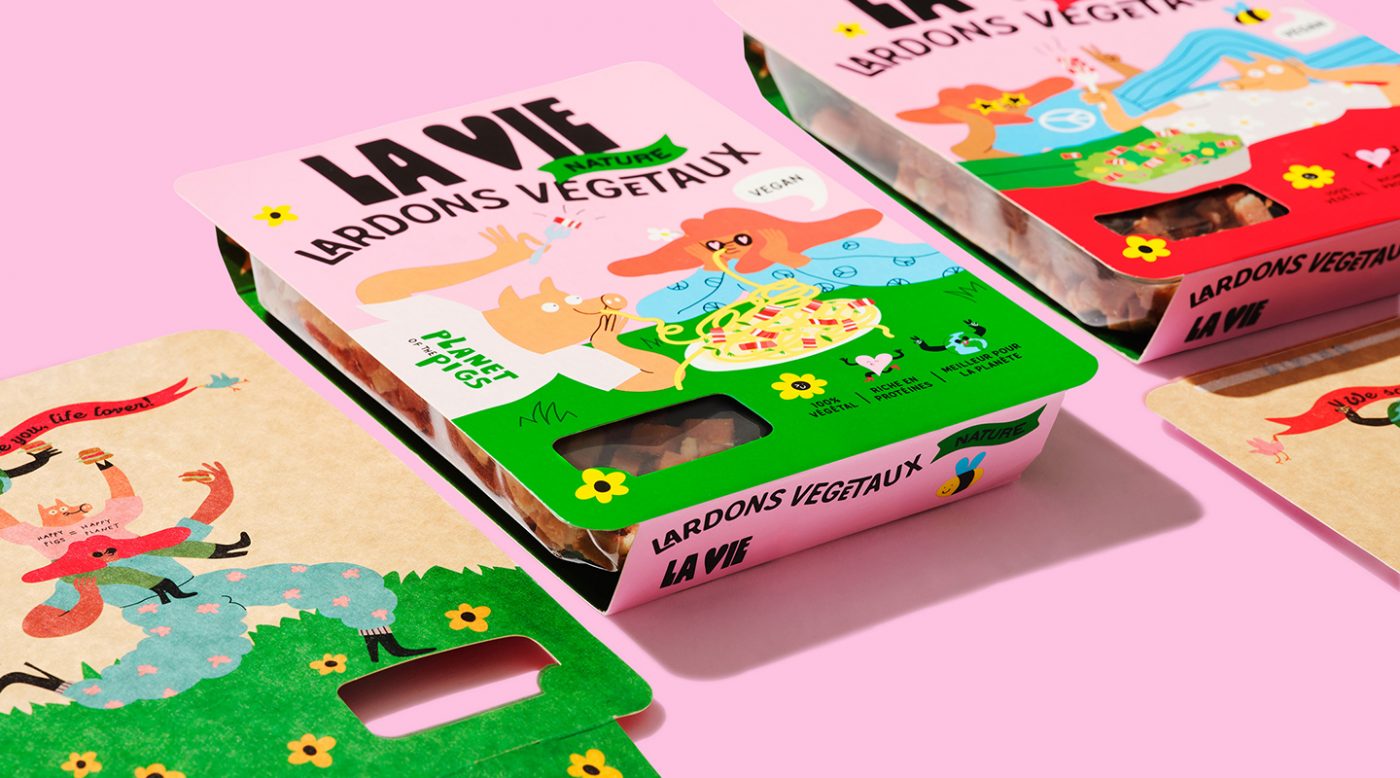
Credit : Packaging of the world
Foodtech has come a long way since its inception. From simple innovations like canned goods and refrigeration to more complex ones like molecular gastronomy and plant-based meat substitutes. Food technology has continually pushed the boundaries of what’s possible in the culinary world. Today, it involves creating sustainable, healthy, and convenient food options that cater to the needs of modern consumers.

Credit : Rebellyous Foods
This topic is gaining importance, now touching a wide range of players including schools, thanks to the expansion of foodtech. Rebellyous Foods, a company specializing in plant-based nuggets, is expanding its influence, with more and more educational establishments opting for its products. According to this Seattle-based company, this trend reflects a growing movement within US schools, aiming to offer a greater variety of plant-based options.
Design plays a crucial role in this evolution. By integrating a design approach into the development of new food products and services, Foodtech companies can create solutions that are not only functional but also aesthetically pleasing. For instance, the packaging design can make or break a product’s success in the market. By using environmentally friendly materials and attractive designs, brands can attract environmentally conscious consumers while standing out on the shelves.
Take the example of La Vie, which aims to change mindsets about plant-based meat. To do this, the brand chose colorful, positive, and accessible packaging; a true celebration of life, as no animal was slaughtered to make this meal! Illustrated by artist Egle Zvirblyte, these packages appeal to both vegans and meat lovers alike!

Credit : Packaging of the world

Credit : Rebellyous Foods
This topic is gaining importance, now touching a wide range of players including schools, thanks to the expansion of foodtech. Rebellyous Foods, a company specializing in plant-based nuggets, is expanding its influence, with more and more educational establishments opting for its products. According to this Seattle-based company, this trend reflects a growing movement within US schools, aiming to offer a greater variety of plant-based options.
Design plays a crucial role in this evolution. By integrating a design approach into the development of new food products and services, Foodtech companies can create solutions that are not only functional but also aesthetically pleasing. For instance, the packaging design can make or break a product’s success in the market. By using environmentally friendly materials and attractive designs, brands can attract environmentally conscious consumers while standing out on the shelves.
Take the example of La Vie, which aims to change mindsets about plant-based meat. To do this, the brand chose colorful, positive, and accessible packaging; a true celebration of life, as no animal was slaughtered to make this meal! Illustrated by artist Egle Zvirblyte, these packages appeal to both vegans and meat lovers alike!

Credit : Packaging of the world
By placing consumer needs and preferences at the forefront of product development, Foodtech companies can create solutions that truly resonate with their target audience. This approach involves conducting in-depth research and gathering consumer testimonials until the final product genuinely meets customer needs.
Meal kit delivery services are an excellent example of consumer-centered design. These services eliminate the daily hassles of meal planning and grocery shopping by delivering proportioned ingredients and recipes right to our doorstep. Catering to busy professionals and families who want to eat healthy meals at home without spending hours in the kitchen, meal kit delivery services have become a popular choice for many consumers.
Moreover, Foodtech doesn’t just meet our food needs; it also tackles broader issues like food waste. This is the idea behind the Too Good To Go app. Its intuitive, user-centered design facilitates connections between businesses with unsold goods and consumers eager to contribute to reducing waste. Thus, Too Good To Go perfectly illustrates how design can serve an ecological cause while meeting user expectations.

Credit : Too Good To Go
Moreover, Foodtech doesn’t just meet our food needs; it also tackles broader issues like food waste. This is the idea behind the Too Good To Go app. Its intuitive, user-centered design facilitates connections between businesses with unsold goods and consumers eager to contribute to reducing waste. Thus, Too Good To Go perfectly illustrates how design can serve an ecological cause while meeting user expectations.

Credit : Too Good To Go
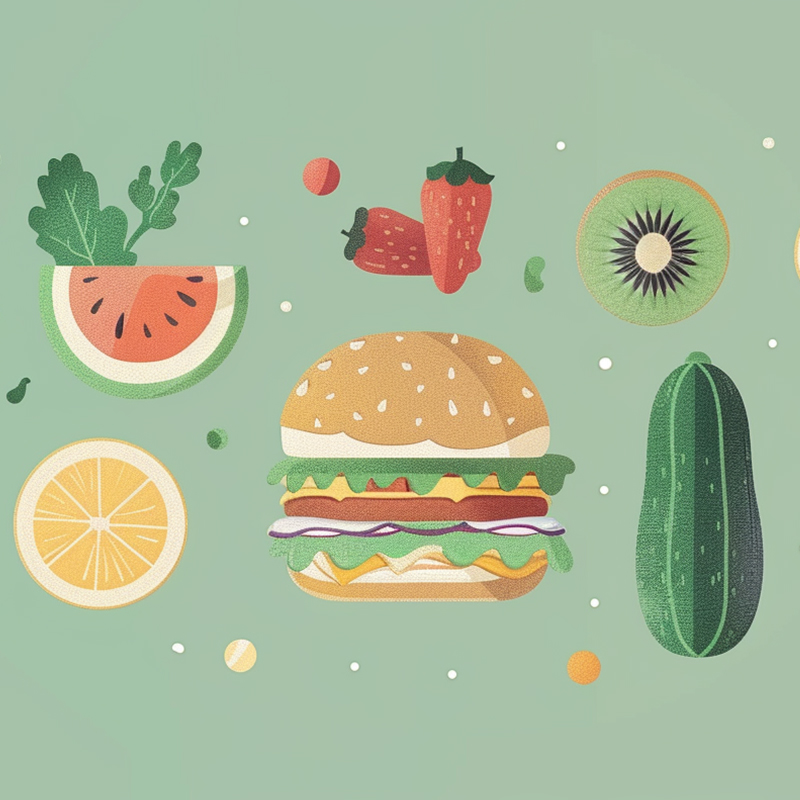
Credit : Midjourney
The future of Foodtech is promising, with endless possibilities for innovation and growth. One particularly interesting area is the use of technology to enhance the culinary experience. From augmented reality menus to smart kitchen appliances, technology is changing the way we interact with food. Moreover, as consumers become increasingly aware of the environmental impact of their diet, food technology companies are exploring new ways to reduce waste and promote sustainable practices. This ranges from using biodegradable packaging to developing plant-based alternatives to traditional meat products.

Credit : Midjourney
The future of Foodtech is promising, with endless possibilities for innovation and growth. One particularly interesting area is the use of technology to enhance the culinary experience. From augmented reality menus to smart kitchen appliances, technology is changing the way we interact with food. Moreover, as consumers become increasingly aware of the environmental impact of their diet, food technology companies are exploring new ways to reduce waste and promote sustainable practices. This ranges from using biodegradable packaging to developing plant-based alternatives to traditional meat products.
The horizon for Foodtech seems bright. This growth would primarily be driven by a steadily increasing demand for healthier, more sustainable, and convenient food products. However, Foodtech still has several hurdles to overcome, particularly regarding regulations and financing. It’s also crucial to ensure that these technological innovations do not create new disparities, such as favoring a wealthier clientele.
Foodtech has revolutionized the culinary industry, transforming not only our eating, cooking habits but also our mindset. The constantly evolving sector offers numerous opportunities for brands looking to stand out in the market. According to Emergen Research, it is estimated that the global Foodtech market could climb up to $342 billion by 2027. However, it’s important to understand that Foodtech is not just about food, but also about the overall consumer experience. And this is where design comes into play.
Foodtech has come a long way since its inception. From simple innovations like canned goods and refrigeration to more complex ones like molecular gastronomy and plant-based meat substitutes. Food technology has continually pushed the boundaries of what’s possible in the culinary world. Today, it involves creating sustainable, healthy, and convenient food options that cater to the needs of modern consumers.

Credit : Rebellyous Foods
This topic is gaining importance, now touching a wide range of players including schools, thanks to the expansion of foodtech. Rebellyous Foods, a company specializing in plant-based nuggets, is expanding its influence, with more and more educational establishments opting for its products. According to this Seattle-based company, this trend reflects a growing movement within US schools, aiming to offer a greater variety of plant-based options.
Design plays a crucial role in this evolution. By integrating a design approach into the development of new food products and services, Foodtech companies can create solutions that are not only functional but also aesthetically pleasing. For instance, the packaging design can make or break a product’s success in the market. By using environmentally friendly materials and attractive designs, brands can attract environmentally conscious consumers while standing out on the shelves.
Take the example of La Vie, which aims to change mindsets about plant-based meat. To do this, the brand chose colorful, positive, and accessible packaging; a true celebration of life, as no animal was slaughtered to make this meal! Illustrated by artist Egle Zvirblyte, these packages appeal to both vegans and meat lovers alike!

Credit : Packaging of the world
By placing consumer needs and preferences at the forefront of product development, Foodtech companies can create solutions that truly resonate with their target audience. This approach involves conducting in-depth research and gathering consumer testimonials until the final product genuinely meets customer needs.
Meal kit delivery services are an excellent example of consumer-centered design. These services eliminate the daily hassles of meal planning and grocery shopping by delivering proportioned ingredients and recipes right to our doorstep. Catering to busy professionals and families who want to eat healthy meals at home without spending hours in the kitchen, meal kit delivery services have become a popular choice for many consumers.
Moreover, Foodtech doesn’t just meet our food needs; it also tackles broader issues like food waste. This is the idea behind the Too Good To Go app. Its intuitive, user-centered design facilitates connections between businesses with unsold goods and consumers eager to contribute to reducing waste. Thus, Too Good To Go perfectly illustrates how design can serve an ecological cause while meeting user expectations.

Credit : Too Good To Go

Credit : Midjourney
The future of Foodtech is promising, with endless possibilities for innovation and growth. One particularly interesting area is the use of technology to enhance the culinary experience. From augmented reality menus to smart kitchen appliances, technology is changing the way we interact with food. Moreover, as consumers become increasingly aware of the environmental impact of their diet, food technology companies are exploring new ways to reduce waste and promote sustainable practices. This ranges from using biodegradable packaging to developing plant-based alternatives to traditional meat products.
The horizon for Foodtech seems bright. This growth would primarily be driven by a steadily increasing demand for healthier, more sustainable, and convenient food products. However, Foodtech still has several hurdles to overcome, particularly regarding regulations and financing. It’s also crucial to ensure that these technological innovations do not create new disparities, such as favoring a wealthier clientele.